Matthew S. Williams's Blog, page 202
June 21, 2012
Alien Versus Predator (2010 game)
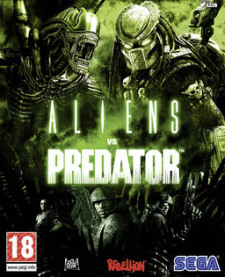 Welcome all to my first video game review! It took me awhile to figure out which I’d start with, but after some thought, I figured AVP – the 2010 game – would be as good a place as any. And given the recent release of Prometheus, I thought it would also be appropriate, not the least of which was because some of that movie’s content ruled out certain aspects of this game.
Welcome all to my first video game review! It took me awhile to figure out which I’d start with, but after some thought, I figured AVP – the 2010 game – would be as good a place as any. And given the recent release of Prometheus, I thought it would also be appropriate, not the least of which was because some of that movie’s content ruled out certain aspects of this game.
But mainly I’ve decided to review it because it was very cool. The game play, the graphics, and the storyline were all consistent with some of the best traditions of the Alien versus Predator franchise. And of course, there were plenty of weaknesses too, which were also consistent with the AVP game series. And above all, it was a fun play, assuming you can get it to work. No offense to the makers, but this game required a beast of a machine to run at a decent resolution and with all the bells and whistles!
Oh yes, I should also mentioned that this is a Steam game, meaning it’s uploaded and played through the Steam interface and is networked to the site during game play. As such, players get to unlock achievements and gain points for completing various levels, beating difficulty settings, and accomplishing assorted tasks. Now that’s all covered, onto the game’s story!
Storyline:
The plot of the game involves three intertwining plot threads which come together in a grand climax once all three campaigns are played. The first involves the perspective of the Colonial Marines, which have been dispatched to the planet to deal with a Xenomorph outbreak.
As usual, they are enforcing Weyland Yutani company policy, which as usual involves rescuing a research outpost which has been conducting Xenomorph research. Once in orbit, the Marine ship is attacked by an unidentified alien ship which blows it apart and sends its drop ship tumbling towards the surface.
 The Marine campaign begins shortly after the dropship forced to crash land on the planet. The gamer then wakes up on a stretcher in the cargo bay, the others having left you behind to go off and deal with the problem. This necessitates that you find your way to them and begin reinforcing them. For the most part, this involves fighting xenos on your own, but here and there, you get to shoot it out with some backup. Of course, they usually die in the process…
The Marine campaign begins shortly after the dropship forced to crash land on the planet. The gamer then wakes up on a stretcher in the cargo bay, the others having left you behind to go off and deal with the problem. This necessitates that you find your way to them and begin reinforcing them. For the most part, this involves fighting xenos on your own, but here and there, you get to shoot it out with some backup. Of course, they usually die in the process…
Things change when your team leader, Tequila, is captured and you have to go and rescue her. At this point, you are being directed by an android who is deep within the facility and reveals what’s being going on there. And of course, this leads to an eventual confrontation with a Predator (aka. “Hunter”), which just happens to be one of the most challenging parts of the game. But of course, confrontations with a Queen and Praetors (queens that have not fully matured) are also pretty tough. Once that is done, you work your way to Tequila who has been placed inside a cocooning room, a la Aliens, and who is already infected.
Once you save Tequila, you and she work your way to the android helper and the medical facility where the outbreak took place. Here, she explains that the experiment went wrong (as always) and begins a procedure to remove the parasite from Tequila’s stomach. This is interrupted when another android, who has been programmed with the mind of Mr. Weyland (played by Lance Henriksen), cuts off the power to the lab. You are therefore forced to put Tequila into cryo-stasis to keep her safe and alive until help arrives.
Your next mission is to find your way to the Weyland droid and find the tracker he has so you can summon a new dropship to you. He is currently hiding in an underground temple which WY have been excavating. The temple, like just about everything else on the planet, is of Hunter construction and its hundreds of thousands of years old. And of course, they came upon preserved specimens of Xenomorph eggs, which prompted them to begin hatching them. Once you defeat the Weyland droid and grab a hold of the transmitter, the dropship arrives and carries you and Tequila to safety in orbit.
But of course, there’s a double-cross. It seems that the personnel aboard the dropship are taking their orders from another of the Weyland droids. They signal that they have a live Xenomorph specimen (in her) and also the emergency transmitter, which just happens to contain all of Weyland’s research. The key bit of information, which he uncovered from his extensive research inside the underground temple, is the location of the Xenomorph homeworld!
 Onto the Alien campaign where things take place from a single Xenomorph that has been bred inside the WY facility. This campaign, as noted, overlaps with the Marine (and later Hunter) campaigns, and involves the Xenomorph’s mission to escape the facility and begin breeding. The first step is to escape confinement from the medical bay and set the others free.
Onto the Alien campaign where things take place from a single Xenomorph that has been bred inside the WY facility. This campaign, as noted, overlaps with the Marine (and later Hunter) campaigns, and involves the Xenomorph’s mission to escape the facility and begin breeding. The first step is to escape confinement from the medical bay and set the others free.
Once this is done, you work your way through the facilities sewers, taking down all personnel you see and attaching “Facehuggers” to them. All the while, the Queen directs you via pheromones, which act as a sort of telepathy, to help her establish a hive on the planet’s Refinery. Here she rests, until the arrival of the Marines causes things to come to a head.
From this point onward, your job is to fight and kill the Marines while simultaneously taking out the facilities systems. After that’s done, you work your way into the temple complex where Hunters show up to intercept you. After killing them, you are forced to battle an Elite Hunter until he’s weak enough to be subdued and then infected by a Facehugger. This gives rise to the hybrid Hunter-Xenomorph (aka. Predalien) that is central to the Hunter campaign.
However, things go awry when the Refinery is destroyed and the Queen is trapped inside. This event, which is part of the Marine campaign, causes the Xenomorph to be stunned and captured. It is taken back to the Marine vessel, where it then escapes and sets up a new hive, becoming the new Queen!
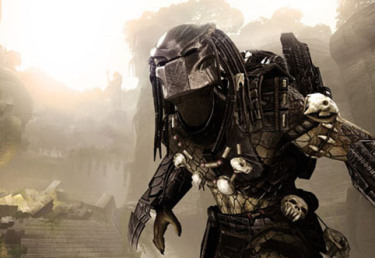 And thus the Predator campaign begins, with the arrival of the Hunter ship and its destruction of the Marine vessel. As an Elite Hunter you are then deployed to the planet to begin hunting the Marines, as punishment for desecrating their temple site, and killing any Xenomorphs that have escaped. You are also responsible for locating any dead Hunters and retrieving their trophies, as well as collecting weapons and sacred artifacts.
And thus the Predator campaign begins, with the arrival of the Hunter ship and its destruction of the Marine vessel. As an Elite Hunter you are then deployed to the planet to begin hunting the Marines, as punishment for desecrating their temple site, and killing any Xenomorphs that have escaped. You are also responsible for locating any dead Hunters and retrieving their trophies, as well as collecting weapons and sacred artifacts.
Your missions then involve infiltrating the Marines bases, disabling their systems, and releasing the xenomorphs. You then find yourself following the “Rookie” Marines path, which leads to the sacred temple where you are forced to battle Praetorians. Moving inside to the underground temple, you come upon the Weyland Yutani party and its compliment of combat androids. After destroying them and retrieving the last Hunter artifacts, you are forced to do battle with the hybrid Predalien.
Once this is done, you are ordered to set the temple to self-destruct, in order to cleanse the taint of the human’s presence and ensure that none of the secret’s within ever fall into their hands again. However, unbeknownst to you, WY has already retreived the vital inro about the xenomorph’s homeworld. Once you return to your ship. the same info is shared from the sacred Hunter mask which you retrieved from the planet below. Apparently, this information has been lost to the Hunters, who have been breeding Xenomorph’s in captivity for training and now seek to contain them, lest someone else (i.e. the human race) try to breed them as a weapon.
Hence, all three storylines come together and point in one direction: the Xenomorph homeworld, where the next chapter is sure to take place!
Good Points:
This game’s positive aspects should be obvious to anyone. As an AVP game, the game play is automatically very fun and intense. This applies to the Marine campaign, with its assortment of Pulse Rifles, Incinerators and Smartguns, though I honestly didn’t care much for the hand guns, shotguns and sniper rifles. Those weapons just seemed clunky and kind of primitive, given the time period in which everything is happening.
And of course, the Predator campaign was pretty damn awesome, given the claws and plasmacasters. The way the equipment was updated to be a little more limiting in terms of energy requirements was also a nice touch, since in AVP2 the Predator’s arsenal was a little too easy to maintain and hence pretty overwhelming. However, the new limitations they put on available weapons was something I did not like. Aside from your claws and plasma gun, all you get is the disc and the combistick. What happened to the net guns and claw launchers?
But what really impressed me was the Xenomorph campaign, where your cheif weapons are your claws, tail, and sheer mobility. You can climb walls, jump from surface to surface, and sneak attack like nobody’s business! You can also facebite with your little mouth, which is pretty damn gory and awesome! The way you can retrain people to put a Facehugger on them also adds to the overall level of detail and coolness of this aspect.
On top of it all, the feel of the game is spot on. When dealing with AVP, one immediately expects a level of intensity and intrigue which can only come from dealing with scary Xenomorphs and deadly Hunters! As the Marine, you constantly have the feeling of vulnerability and impending doom. And in the end, the only way to win is to stay mobile and be conservative with your ammo supply. As the Hunter, stealth and patience are your ally. If you engage too quickly or easily, you will be discovered and overwhelmed by superior numbers of Marines or Xenomorphs. And as the Xenomorph, the ability to move hide, move quickly, and use the surrounding environment to your advantage is the key to success. This balance of abilities and weaknesses is key to making the gaming experience feel faithful to the franchise and as realistic as possible.
Bad Points:
But alas, there are some weaknesses. The first is the most obvious, and one I mentioned already. This game has some pretty cool graphics and game play features, such as the blurring effect which you can turn off and on. With it active, you experience blurring whenever you turn fast. This adds to the overall suspense and intensity of the game and makes it that much harder. But this, like everything else in this game, requires you have a fast machine with a good graphics card. Otherwise, expect things to be slow, choppy, and look pretty grainy!
Second, there’s the rather tired duty of the storyline where reasons have to keep being given for why you are on your own as the Marine. With the Hunter, it’s obvious why you’re fighting solo. That’s simply the way they fight, every Hunter in his own domain stalking and killing his prey and taking trophies. But for the Marines, the standard deployment tactic is by squad, coordinated and covering each others’ back. The fact that you’re constantly alone as a Marine just doesn’t make sense.
Sure, in previous versions, when the game just wasn’t sophisticated enough, this was understandable. A single person, first-person-shooter was simply the best they could do with what resources and money they had available. But now? With the kinds of AI’s and sophistication the latest games boast, there really isn’t much of a reason for making the majority of the Marine campaign single person FPS . That, and the constant reasons for why you’re on your own (i.e. the rest of the squad got killed, the last dropship got shot down, the door slammed shut and separated you from them) just gets annoying after awhile.
And lastly, there is the storyline which is a bit confusing. The part about scientists in a WY facility breeding Xenomorphs, that’s perfectly understandable. In fact, that’s the setup of every single AVP story: the evil corporate goons breed Xenos, they get loose, the Marines go in to clean up, they find Hunters there doing the same thing, and everything devolves into a three way fight. But why are they breeding Xenos if the purpose of the colony was to uncover ancient Hunter ruins? Kind of seems like the traditional plot was laid on top of this other one in order ensure that all the plot elements are there.
Prometheus’ Plot Changes (Spoiler Alert!):
In the end, the purpose of this game was to bring all sides together so they could learn the location of the Xenomorph homeworld. That way, something that was never revealed in the original franchise was now being previewed, the gamer being left with the distinct impression that it would serve as the backdrop for the next game. Unfortunately, the movie Prometheus ruled this out by saying that the Xenos were a “Engineer” (aka. Space Jockey) bioweapon. If they are in fact weapons this race engineered, then they don’t have a homeworld.
Granted, this can be explained away by simply saying that the Engineers set up a “colony” for the Xenos, an entire world that was set aside for keeping them and breeding them in isolation. Since the retreat of the Engineers, this colony could have since evolved to become a festering hive of Xenos, with multiple Queens battling for supremacy and conflict giving rise to new and frightening sub-species. That could work, and it could be downright interesting.
And hey, if there is to be no sequel to this latest AVP game, someone will probably do some fan fic dealing with it. Who knows, it might even be me. I’m a fan, I can kinda write! Pay me to do it!








Taken 2 Announced!
 My thanks to Jamie Hall of That Fantasy Blog for bringing this to my attention! It seems that Taken 2 has got its funding and is coming to theaters in the near future. If you’re like me, or my wife, then chances are you loved the movie Taken with a passion! I mean how badass was Liam Neeson in that movie?
My thanks to Jamie Hall of That Fantasy Blog for bringing this to my attention! It seems that Taken 2 has got its funding and is coming to theaters in the near future. If you’re like me, or my wife, then chances are you loved the movie Taken with a passion! I mean how badass was Liam Neeson in that movie?
Sure, his daughter could be annoying, his wife was like a caricature of a rotten social climber, and the plot wasn’t all that complex. BUT WHO CARED! It worked, and Liam Neeson’s skills, take downs and deliver were superlative! You remember his opening salvo to Marko and the guys who kidnapped his daughter:
“I don’t know who you are. I don’t know what you want. If you are looking for ransom, I can tell you I don’t have money. But what I do have are a very particular set of skills; skills I have acquired over a very long career. Skills that make me a nightmare for people like you. If you let my daughter go now, that’ll be the end of it. I will not look for you, I will not pursue you. But if you don’t, I will look for you, I will find you, and I will kill you.”
Tell me you can do better than that! And remember that scene where he walks right into their hideout posing as a French agent and begins extorting them? What balls! And to find out that he was just playing them so he could find out which of them was Marko… I’m pretty sure Neeson became my hero the moment he uttered his pre-ass kicking line:
“You don’t remember me? We spoke on the phone two days ago. I told you I would find you.” WHAM WHAM WHAM! All dead…
In any case, it seems that Luc Besson, the writer/director who helped create the first, is back to produce a sequel. No news on when it will be released yet, but details released from the studio indicate that they are planning on it being this year. As for the storyline, it appears that it will once again involve Bryan Mills’ (Neeson’s) family being taken hostage. This time around, it happens in Istanbul during a family trip, apparently by Albanian mafia members who are looking to get even for their last encounter with him. One would think they learned their lesson!
[image error]








The Hunger Games, a review (finally!)
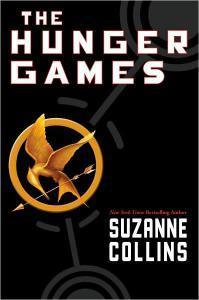 It finally happened, I read the Hunger Games. Not that this should come as much of a surprise, I did promise I would after all. But it took me quite a while! Months back when I was doing a review of Dystopian Science Fiction – which earned me most of my current followers, thank you! – one of the biggest questions I was asked was “what about the Hunger Games?”
It finally happened, I read the Hunger Games. Not that this should come as much of a surprise, I did promise I would after all. But it took me quite a while! Months back when I was doing a review of Dystopian Science Fiction – which earned me most of my current followers, thank you! – one of the biggest questions I was asked was “what about the Hunger Games?”
Yes, person after person wanted to know how this recent piece of YA dystopian fiction fit into the historical record. At the time, I really had no intention of reading it or doing a review. Not because I had anything against Collins or this book, but because I had not heard of it prior to the movie’s release. And I have this thing where I become resistant towards anything that becomes a big commercial deal. Maybe its a desire not to follow the trends, I don’t know.
However, as I began to look into the concept of this book, the desire began to grow to check it out. And though I did my best to avoid spoilers, I couldn’t help but check out some reviews of the phenomena and what is said about our culture. Here is an excerpt from one such article, entitled “‘The Hunger Games’: your kids are angrier than you think”, by Brian Bethune (Maclean’s Magazine):
“Imagine a life where possibilities are opening at a speed that veers unpredictably between exhilarating and terrifying. The familiar, precisely because it’s familiar and safe, still tugs at you, but even so, you want out because your old life constricts as much as it comforts. Besides, your social milieu, which often feels like an endless struggle to achieve, or resist being slotted into some arbitrary niche—pretty, ugly, smart, dumb, athlete, klutz—is changing fast. You feel driven—by inner need and outside pressure—to make choices. Meanwhile, the manipulative, often harsh, powers that be, who created the larger world they’re busy shoving you into, have clearly not done a bang-up job of it, either in their personal lives or as part of society. And they want you to get out there and fix their mistakes—just at a moment when worry over the imminent demise of their entire socio-economic structure is never far from the surface. It can be cruel and scary out there. Dystopian, even.
Chances are, anyone not imagining this life, but actually living it, is a teenager. And living it in an era of economic uncertainty, conspiracy theories and fear of environmental collapse. Western civilization used to produce literary utopias, but in the past century of world wars, financial panics, murderous totalitarian regimes and nuclear threat, dystopias have outnumbered sunny projections by several orders of magnitude. Pessimistic depictions of the future are now everywhere in popular culture. Teens and teen books are not immune to larger trends in society.”
What a perfect synopsis really. Not only is this book a look at a future where apocalyptic events have led to the creation of an oppressive, abusive state that controls people through scarcity and force. Not only is it a commentary on mankind’s fascination with reality tv and endless appetite for distraction. No, this book has the added dimension of capturing the angst and confusion of being a teenager, thrust into the world of adults and forced to work hard and compete for their apparent amusement, all the while reflecting on how it’s basically the older generation that have made the world what it is.
Plot Synopsis:
Not that it’s necessary since so many people have now read the book or seen the movie, but I shall give a bare bones summary anyway just to recap the selling points. The story opens on the nation of Panem, which is a play on the name Pan-America, a post-apocalyptic nation set in the not too distant future. Though it is never specified exactly what happened, what is clear is that what is left of North America is now organized into 12 Districts ruled from a central city known only as “The Capitol”.
We then see the protagonist, Katniss Everdeen, a resident of District 12 located in the coal-rich areas of Appalachia. Her and her friend Gale are hunting, which is necessary to ensure their families eat well and supplement their meager incomes. We quickly learn that the Hunger Games are upon the 12 District for another year, that the names of two “tributes” are about to be drawn from each district, whereupon they will be sent to the Capitol to compete. When District 12′s names are drawn, Katniss is terrified to learn that her younger sister’s Priss, who is barely a tween, has been selected. She does the unthinkable and volunteers in her stead.
Her partner/competitor for the games is a baker’s boy named Peeta, a boy who apparently has always fancied her. The two of them are put aboard the special rail car for transport to and from the Capitol where they meet their “coach”, their design team, and the frumpy lady who acts as their PR and etiquette consultant. As they travel in style, these people take turns prepping them, which mainly consists of cleaning them up and making them look presentable since the lead up to the games involves all kinds of televised appearances and interviews.
Their coach, a man named Haymich Abernathy, who was the last person from D12 to win, is a horrendous drunk who doesn’t seem to care what happens to them. This changes when an altercation aboard the train makes him realize that Katniss and Peeta have some fight in them. From then on, he curbs his drinking so he can advise them properly. When they arrive, they witness even more style and opulence, being placed in a private hotel, treated to lavish meals, and made to take part in a presentation ceremony where all districts ride out in a public arena.
Quickly, and with Haymich’s help, Katniss and Peeta distinguish themselves as the team to beat. On many occasions, hints are given that there is a bubbling romance between the two, one which may very well be real. Katniss also impresses her judges when she demonstrates her archery skills, something she’s spent years honing from hunting. By the time the games roll around, she is considered the contestant to beat, and Peeta quietly shares with her that he wishes there was a way to strike back at the people who are forcing them to compete.
The games begin shortly thereafter and half the tribute die within the first day. Bonds form as the kids from the more privileged districts, known as the Career Tributes, come together to eliminate other contestants, which is typical of the games. As the best equipped, best sponsored and best trained contestants – who, as the name suggests, spend much of their time preparing for this at home – a tribute from one of their districts is usually the winner. Their leader is a large, temperamental boy named Cato, who to her dismay, Peeta seems to have joined in order to hunt her.
Luckily, Katniss forms a bond of her own with a young girl named Rue, a young girl from District 11 who reminds her of her sister. Small, fast, and adept at climbing and hiding, the two become fast friends and assist each other. They even manage to take out a few of the privileged kids and manage to destroy their supply cache, a move which evens the odds considerable. Peeta also risks his own life to save Katniss at one point, a move which confounds her since she was convinced he turned on her. However, the move saves her life and causes Peeta to be several injured by Cato himself.
Shortly thereafter, Rue is killed by one of the boys. Katniss manages to take this boy out with an arrow, and sings to Rue until she dies. This is something she promised she’d do, as Rue was a lovely singer who sang regularly during her long hours picking orchard fruit. Remembering what Peeta said about getting back at the Capitol, she also moves Rue’s body to a more dignified spot and covers it with flowers, knowing that everyone in the Capitol is watching. She is given heart when she realizes that Peeta’s has not been declared dead yet and goes off in search for him.
She finds him camouflaged in an embankment and digs him up. He is mortally wounded, and Katniss spends the next few days trying to heal him. Due to their growing popularity as “star-crossed lovers” the Capitol announces a rule change, couples from a district can win together! Once he’s healed enough, Katniss and Peeta begin to enact a final plan to draw the last of their enemies out and kill them. When Rue’s fellow tribute dies and the girl named “Foxface” is accidentally poisoned by some berries Peeta picks, Cato is now alone. However, when they find him, the Capitol throws in another game changer.
All the previous tributes, now dead and taken away, have been bred into muttations – bio-engineered dogs that can stand on their hind legs, and that are smarter and more aggressive than your average hound. These dogs pursue the three tributes to the Cornucopia, the starting point of the games, where they trap them on top of the structure. There, Cato tries to take Peeta hostage, but Katniss takes him down with an arrow to the hand. He falls and is set upon by the mutts, and Katniss mercifully fires and arrow into his head to end his suffering.
In the end, the Capitol declares that the two of them must kill each other again, but Katniss and Peeta pull a fast one. Grabbing their store of poisonous berries, they resolve to eat a lethal handful together and force the issue. Seeing this, the Capitol backs down and declares them both winners! A hovercraft arrives shortly thereafter and brings them back to the Capitol for medical treatment and rest. When Katniss wakes up, she learns that Peeta is alive and well despite his many injuries, and she appears to be completely made over.
However, all accounts are not settled. Haymich warns her before the final interviews take place that her stunt with Peeta embarrassed the rulers of Panem and they are planning on retribution against them. There only hope is to make it look as if they did it for love, playing up the popular lovers angle and thus ensuring that the Capitol can’t touch them. This, they do, but Peeta is heart-broken when he learns that to Katniss, this was just a ploy to help them win. However, she privately reflects that she doesn’t know if her feelings for Peeta are genuine or not, and fears what will happen when they are separated upon their return to D12.
Overall Impressions:
Let me start with the criticisms first, since that is by far a shorter list. To begin, I felt that things were conveyed a little quickly and easily vis a vis the whole power structure of Panem. It’s in the first chapter when the Games are being discussed that Katniss conveys all the relevant details about the 12 districts, how their used to be a 13th, and how the games are used to control them and prevent further rebellion. In fact, I felt that the tone of the book was being pitched at a bit of a basic level.
But then of course, I remembered that it’s YA fiction. Of course it’s going to say these things up front, the intended audience is not yet familiar with dystopian fiction and its many subtleties. Slapping myself on the forehead and saying “A-doi!” I continued reading with a more open and less snobbish mind. And the book only got better from there, weaving a young adults appraisal of the world quite seamlessly with dystopian themes.
Because in the end, the real genius of the book comes through amidst all the entertaining and well-paced format of the story. Between Katniss’ confusion, angst, anger and the ongoing struggle to stay alive, the dystopian flavor of the whole affair really shines through. We see that there are very clear and obvious distinctions between the Capitol and the outlying districts, that these become more evident and appalling the further one ventures out, and that disparities between districts are exploited for the sake of entertainment and control.
This is especially true when it comes to the Career Tributes, who have it better than the others and stick together as a way of guarding their shared sense of privilege. The way the outlying districts, as personified by Rue and Katniss, form similar bonds is held up as the flip-side to this, where a shared sense of deprivation and abuse push them together to resist their common enemies. And what I found brilliant about this was how it demonstrated that for the dispossessed, it’s not just the oppressors who they must fight against, but also those they have bought off with scraps from their own table.
But even more brilliant was the way this was so relatable to young adult readers. In their own way, teenagers experience dystopia every day by simply having to endure the unfair and privileged environment known as high school. With its cliques, ruthless sense of social judgment, bullying and constant pressure to perform, always at the behest of a system dominated by adults, it must seem like an arena in which their very lives are at stake. Many people speak of “teen-age” drama and how silly it seems to them, but I challenge those people to look back at what being a teenager was like and to tell me drama isn’t precisely what every moment of every day is charged with.
I can now see why this book resonates with young people and adults everywhere. Not only was it a good dystopian themed story, combining several classical elements in a way that hasn’t really be done before; it is also a perfect allegory for growing up and being forced to step into a world not of your own making; all the while feeling like everyone’s against you. Between those forcing you into the game and those of your own age trying to kill you, adolescence is very much like living in a totalitarian state and fighting your own for the entertainment of others.
I get it, people. I see why this book is a big deal now. However, I often wonder if others really see its for its inherent value. Sure it’s entertaining, relatable, and chock full of stuff that young people love – empathy, romance, pain and angst. But it’s allegorical depth is what I think makes it truly valuable as a science fiction and dystopian read, especially to the young. By describing a dark world from the point of view of teenagers, it basically captures what all teenagers know already. Life can be totally unfair, oppressive, aggravating, and just generally suck!
Personal Note:
Feel free to skip this part if you don’t feel like a heavy read. But I assure you, it’s relatable…
In my work, I’ve often been subjected to the drama of the young and find myself sympathizing one moment and wanting to pull my hair out the next. But always, I enjoy the moments when I’m able to talk to a young man or woman and feel like I’m getting through to them. There’s nothing more rewarding when you see that glimmer in their eyes that says “they get it!” It’s little wonder then why my worst job experience was in an environment where the words “f*ck off”, “you suck”, and “I hate you” were so common.
It made me angry, it made me sad. But more than anything, it made me feel powerless. How do you help when the disparity of your positions makes it impossible? But of course, after I left, I kept hearing how the new teacher was constantly being told “Mr. Williams was WAY better than you!” Funny, they kept comparing me to the last guy too  But I think it made me appreciate how much life can suck for young people, especially kids growing up in poverty, broken homes, and living with the legacy of abuse, defeat and blatant racism. As if these kids don’t have enough problems without a dark legacy hanging over their heads.
But I think it made me appreciate how much life can suck for young people, especially kids growing up in poverty, broken homes, and living with the legacy of abuse, defeat and blatant racism. As if these kids don’t have enough problems without a dark legacy hanging over their heads.
Under the circumstances, it’s amazing any of us make it out of our teen years, let alone the majority of us. That was another thing that happened regularly in my old job posting, teen-age suicide. With all the problems and complications of life and their age, some kids truly feel like there’s no way out. In addition to thinking life sucks, they become convinced that it isn’t worth living. But what seems to do them in is the fact that they feel so alone, and can’t express their feelings and lighten their load. If more kids understood just how un-alone they are, far more would make it to adulthood. I think we should all take a moment for those who didn’t…








June 20, 2012
The Zombie Killing Bullet!
 Just when I thought this Zombie craze was ebbing, it seems an ammunition manufacturer has gone and developed a bullet specifically designed for killing zombies. The company’s name is Hornady Manufacturing Co. and the product is known as the Z-Max. Apparently, the bullet line was inspired by Mr. Hornady’s passion for zombie films, so the product is more gimmick than anything else.
Just when I thought this Zombie craze was ebbing, it seems an ammunition manufacturer has gone and developed a bullet specifically designed for killing zombies. The company’s name is Hornady Manufacturing Co. and the product is known as the Z-Max. Apparently, the bullet line was inspired by Mr. Hornady’s passion for zombie films, so the product is more gimmick than anything else.
Still, these are real bullets that are capable of killing real people, regardless of whether or not they are high on Bath Salts. But of course, the promotional video emphasizes killing “varmints”, and features rodents rather than the Walking Dead. But with a name like Zombie Max and a motto like “Just in Case” you gotta know who they’re really talking about. Naked face eating people or zombie groundhogs… yeah, I think we all know!
Apparently, the bullets feature an exploding tip packed into every bullet. Other features include ultra-flat trajectories and patented jacket technology that give it a lot of punch and some serious velocity. So I’m thinking if we do see an outbreak of Bath Salt or government-engineered virus infected undead creatures, we’ll want to pack our weapons with these high-speed exploding bullets!
Just for fun, the company also released a silly video demonstrating the performance of their ammo on (ahem) zombie varmints. Personally, I think a promotional spot with AMC’s The Walking Dead would have been way better. Isn’t season3 coming up soon? You can’t beat that kind of exposure! Happy hunting y’all!









The Summer of “At Long Last!”
It seems like the summer of 2012 is just loaded with anticipatory events. I say this because after many months of waiting, repeats and teaser trailers, favorite shows and much anticipated movies seem to be coming out all at once. Strange, wasn’t this the year the world was supposed to end? It would seem in bad taste for it to go now, just when everything fun is happening at once!
 Last week, True Blood began its long-awaited fifth season. And having watched the first two episodes, I am pretty pleased with the direction it’s been taking so far. While I’ve not dedicated much attention specifically to vampires in pop culture on this site, as a true geek, I would be remiss if I didn’t indulge in at least one of them. Personally, I think this show is one of the best expressions of this whole vampire trend, and were it not for the zombie craze that seems to be paralleling it, I would have said something about it a long time ago!
Last week, True Blood began its long-awaited fifth season. And having watched the first two episodes, I am pretty pleased with the direction it’s been taking so far. While I’ve not dedicated much attention specifically to vampires in pop culture on this site, as a true geek, I would be remiss if I didn’t indulge in at least one of them. Personally, I think this show is one of the best expressions of this whole vampire trend, and were it not for the zombie craze that seems to be paralleling it, I would have said something about it a long time ago!
 Second, Futuruma is premiering tonight! Yes, after a multi-year hiatus where it too was cancelled by the inexplicably stupid executives over at the Fox Network, Matt Groening’s animated commentary on sci-fi and pop culture is back for another season of hilarious antics and high-brow spoofing. As a big-time fan of this show, I entertained hopes that its skyrocketing DVD sales and rentals would convince some executive to bring it back.
Second, Futuruma is premiering tonight! Yes, after a multi-year hiatus where it too was cancelled by the inexplicably stupid executives over at the Fox Network, Matt Groening’s animated commentary on sci-fi and pop culture is back for another season of hilarious antics and high-brow spoofing. As a big-time fan of this show, I entertained hopes that its skyrocketing DVD sales and rentals would convince some executive to bring it back.
Why, just look at Family Guy. After two and a half years, Fox got wise to the fact that if they didn’t renew the show, TBS would! And then all that money and ratings would be lining some other executives’ pockets. However, it seemed that in Futurama’s case, Fox remained bullheaded and dumb! And so the good folks at Comedy Central swooped in and gave them a slot! It just goes to show you that one network’s loss – their stupid, shortsighted, and obviously politically motivated loss – will be another’s gain.
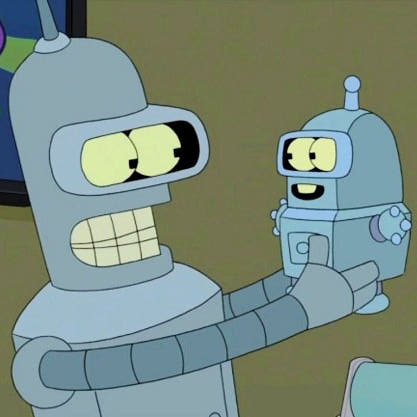 And according to Groening’s podcasts where he shared news about the upcoming debut, this seventh season will begin with a story of Bender becoming a dad. Entitled “Bender Squared”, we see him playing with a younger version of himself, no doubt teaching him how to steal and smack talk and generally be an alcoholic, kleptomaniac bending unit! Can’t wait to see it.
And according to Groening’s podcasts where he shared news about the upcoming debut, this seventh season will begin with a story of Bender becoming a dad. Entitled “Bender Squared”, we see him playing with a younger version of himself, no doubt teaching him how to steal and smack talk and generally be an alcoholic, kleptomaniac bending unit! Can’t wait to see it.
 And of course, this is also the summer when both Prometheus and the new Batman movie are premiering! In fact, The Dark Knight Rises open tonight, and since there were no press screenings, no one outside of the test audiences have seen it yet. I sincerely hope people have booked their tickets… I need to get on that soon! Don’t want to be tardy to the party like I was with Prometheus!
And of course, this is also the summer when both Prometheus and the new Batman movie are premiering! In fact, The Dark Knight Rises open tonight, and since there were no press screenings, no one outside of the test audiences have seen it yet. I sincerely hope people have booked their tickets… I need to get on that soon! Don’t want to be tardy to the party like I was with Prometheus!
And since its debuting this very evening, I think one final trailer to get us all psyched up is in order. Here’s the “exclusive” Nokia trailer, which means the same ol’ footage spliced by some other corporate sponsor. It’s fun anyway, check it out!









Of Exoskeletons
Hey all. A few days ago, I decided that it was time for me to do a post dedicated to the sci-fi concept and emerging technology of exoskeletons. I’ve been beating around that bush for months now and figured it was high time I just jumped into it. But an interesting thing happened. In the course of researching fictionalized examples of this technology, like Iron Man and so forth, I found that there were real historical precedents. Not just the whole “Future Soldier” concept as we know it, but ones that go back at least a century and a half.
Though they are not quite what you’d expect – for example, most have no power systems or moving parts – they are nevertheless examples of armored exoskeletons that were designed with a modern application in mind… i.e. stopping bullets. Yes, unlike your more conventional suits of armor, these concepts were designed to keep a man alive in a shootout long enough to kill his enemies, reach his objectives, or bust criminals. Here’s the list that I have compiled, in chronological order of when they were debuted:
Ned Kelly’s Armor: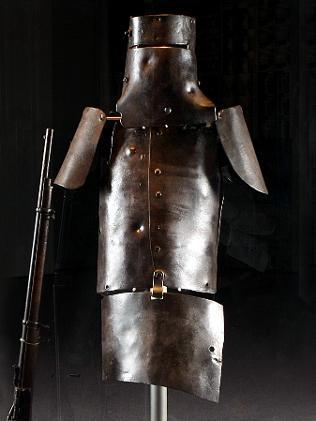 Our first example comes to us from Australia of the 1870′s, in the form of the body armor worn by notorious outlaw and (to some) folk hero Ned Kelly. Like all members of his gang, Kelly decked himself out with this head to groin suit in order to protect himself from gun fire during the commission of their many robberies. Always, the suit war worn under a dust jacket to hide it’s true nature.
Our first example comes to us from Australia of the 1870′s, in the form of the body armor worn by notorious outlaw and (to some) folk hero Ned Kelly. Like all members of his gang, Kelly decked himself out with this head to groin suit in order to protect himself from gun fire during the commission of their many robberies. Always, the suit war worn under a dust jacket to hide it’s true nature.
The armor was made of iron a quarter of an inch thick, and consisted of a long breast-plate, shoulder-plates, back-guard, and helmet and. Kelly’s suit also had apron on the back and padding was applied inside to provide comfort underneath the armor’s heavy weight of 100 pounds. The suits’ separate parts were strapped together on the body while the helmet was separate and sat on the shoulders, allowing it to be removed easily.
Initially, police dismissed rumors of this armored suit as nonsense, but in the course of a firefight,they began to wonder if Ned Kelly was even human. It was not until he fell and his dust jacket came open that they realized he was wearing the suit, and not some kind of immortal demon!
Dr. Brewster’s Armor: In the early 1900s, a man from Dover, New Jersey named Dr. Guy Otis Brewster was famous for his experiments with unusual body armors. Perhaps his most famous suit was the bulletproof suit shown at right, which bestowed the wearer with the mien of a warrior polygon. As was to be expected, his tests of this unusual costume garnered him some rather interesting press coverage.
In the early 1900s, a man from Dover, New Jersey named Dr. Guy Otis Brewster was famous for his experiments with unusual body armors. Perhaps his most famous suit was the bulletproof suit shown at right, which bestowed the wearer with the mien of a warrior polygon. As was to be expected, his tests of this unusual costume garnered him some rather interesting press coverage.
During WWI, his popularity led the US military to take notice. Due to the sheer number of deaths overseas to machine gun fire, and America’s impending involvement in the war. Experiments were conducted at the Picatinny Arsenal in April, 1917, when Dr. Brewster stood in front of a Lewis machine gun and was shot several times. After receiving several hits, he indicated that he suffered no trauma or serious pain from the experience. In fact, he claimed declared that it was “only about one tenth the shock which he experienced when struck by a sledge-hammer.”
However, his designs were not picked up for use in the war, though it was part of a larger effort to equip soldiers with body armor to defend against the hail of bullets they were forced to walk into.
WWI Trench Armor: The Great War was the most brutal war history had seen at date. And as such, some rather interesting – and in some cases, medieval – equipment was developed as a result. This included many designs of trench armor, which could be something as simple as a faceplate and helmet to a full metal body-suit. The purpose in each case was to provide the wearer with all the necessary protection to ensure that they would be resistant to snipers, machine guns and all other forms of enemy fire.
The Great War was the most brutal war history had seen at date. And as such, some rather interesting – and in some cases, medieval – equipment was developed as a result. This included many designs of trench armor, which could be something as simple as a faceplate and helmet to a full metal body-suit. The purpose in each case was to provide the wearer with all the necessary protection to ensure that they would be resistant to snipers, machine guns and all other forms of enemy fire.
Naturally, these designs were never picked up en masse, mainly because the weight of the equipment made soldiers cumbersome. In addition, they did not protect against one other all-important killer in trench warfare, that being poisonous gas! Yes, it seemed that if a soldier had any kind of expectation of life in the trenches, their only hope was to cover themselves in sheets of metal, a helmet and a gas mask. In the end, engineers found it much easier to just develop tanks 
Police Wheeled Shield: It seems that the concept for Robocop began long before 8 Man and cyborgs were ever conceived. At least, that appears to be the reasoning behind the Police Wheeled Shield. Developed in 1956 for use by Detroit policemen against rioters and gunmen, this bit of body armor came in both the wheeled and carried variety.
It seems that the concept for Robocop began long before 8 Man and cyborgs were ever conceived. At least, that appears to be the reasoning behind the Police Wheeled Shield. Developed in 1956 for use by Detroit policemen against rioters and gunmen, this bit of body armor came in both the wheeled and carried variety.
The shield itself is made of an impregnable layer of steel, whereas the man (or men) behind it fire through its portholes. The viewing panel is inlaid with bullet-proof glass, and the flattop carried version also comes with a head-mounted light. Those using the carried version were also equipped with bullet-proof leggings, to ensure the bad guys didn’t get wise and try to trip them up with a leg shot.
Though innovative and virtually indestructible, the wheeled shield never saw widespread use for a number of reasons. For one, it was too large and cumbersome and was eventually rendered obsolete thanks to the invention of lightweight riot shields and Kevlar vests. Still, the idea of an armored cop did play well in the movies. Go Robocop!
Future G.I.: Developed in the late 50′s, this concept reminds us that during the Cold War, armies took the possibility of having to fight in radioactive environments very seriously. This particular bodysuit, known as the Future G.I., was developed in 1959, but was abandoned shortly thereafter in favor of more conventional concepts. Maybe they thought it was a little to dystopian or something…
Developed in the late 50′s, this concept reminds us that during the Cold War, armies took the possibility of having to fight in radioactive environments very seriously. This particular bodysuit, known as the Future G.I., was developed in 1959, but was abandoned shortly thereafter in favor of more conventional concepts. Maybe they thought it was a little to dystopian or something…
In addition to a nylon armored vest that was resistant to radiation, the wearer also sported a transistor radio helmet, and a heat resistant mask. Naturally, the purpose here was to outfit soldiers so that they could defend territory that had been struck by nukes. Clearly, some people in the Pentagon thought that even after the bombs fell, soldiers would still need to fight and die for irradiated stretches of land.
All of the equipment featured in this design was state-of-the-art for the time, and you may notice the soldier posing for the photo is carrying carbine prototype which would eventually become the M16. Oddly, this is the only piece of the suit that would survive, going on to see service in Vietnam and every US conflict ever since.
“Future Soldier”: Last, we have by far the most comprehensive and in-depth program to date for the development of an exoskeleton. Falling under the general banner of “Future Soldier”, the US and other national armies are hard at work with contractors to try and come up with a workable powered suit for armed forces use. These consist mainly of powered limbs that attach to the soldiers own arms and legs and assisting in basic motions, such as walking, lifting, and carrying heavy loads.
Last, we have by far the most comprehensive and in-depth program to date for the development of an exoskeleton. Falling under the general banner of “Future Soldier”, the US and other national armies are hard at work with contractors to try and come up with a workable powered suit for armed forces use. These consist mainly of powered limbs that attach to the soldiers own arms and legs and assisting in basic motions, such as walking, lifting, and carrying heavy loads.
Each variant of the powered exoskeleton is built around the same concept, consisting primarily of an exoskeleton-like framework worn by a person and a power supply that supplies at least part of the activation-energy for limb movement. These will enable soldiers and engineers to be able to bear more weight and survive in hostile environments. Some day, they might even be able to increase a wearer’s running speed and allow them to jump higher and farther as well.
So far, civilian and military concepts for powered suits include the Ekso Bionics/Lockheed Martin HULC (Human Universal Load Carrier), the Sarcos/Raytheon XOS, the Cyderdine (no joke) HAL (Hybrid Assistive Limb) and the Argo Medical Technologies ReWalk module for paraplegics.Each of these suits give the wearer the ability to lift several times their own weight and/or assist them in the use of their limbs, especially in those who are paralyzed or do not have full range of motion or use.
Because of their obvious merits, their exists a massive commercial market for these designs as well, mainly in the field of medicine for spine-injury or terminally ill patients. In fact, it would be no exaggeration to say that military development and civilian development are feeding off each other, with research and development on the one side providing impetus and advancement to the other. So in addition to powered construction suits and Iron Man-type units, we might also be seeing walking suits replacing wheelchairs real soon!
Thank you all for reading and feel free to stay tuned for my next installment in this lineup, featuring the concept of exoskeletons and powered suits in fiction. Really folks, Iron Man is just a drop in the bucket of this fertile concept, so stick around!








June 19, 2012
I Would Like to Thank the Academy…

 Well, not so much the Academy, what have they done for me lately? Really, the person I need to thank is the one who nominated me for not one, but two awards: Maryam, aka. Caracaleo. Apparently, I’m doing something right in her eyes, otherwise I doubt she’d have given me the nod here. Or to be quote her words:
Well, not so much the Academy, what have they done for me lately? Really, the person I need to thank is the one who nominated me for not one, but two awards: Maryam, aka. Caracaleo. Apparently, I’m doing something right in her eyes, otherwise I doubt she’d have given me the nod here. Or to be quote her words:
“This blogger is my hero. Amazing posts. Great keep up with publishing. Not to mention an amazing ability to write and talk about things I find fascinating. Therefore it is my honor to present not one, but two awards.“
Excuse me a moment… I can’t stand praise it makes me all… gushy! Okay, all better. And now, as is customary for these awards, I shall answer the five following questions as best I can:
Why do you blog?
I started blogging two years ago as part of my ongoing efforts to promote myself as a writer. However, I’ve found that having a site and being able to share your thoughts, not just on your own work but anything really, can be a very fun and rewarding experience. These days I blog mainly so I can keep up with people, share new and interesting ideas, and hear from others and what they think. It’s become more of a way to maintain relationships than promote anything, thought I still like to do that from time to time

What do you hope people get from your blog?
Honestly, I just hope they come away feeling entertained, enlightened, or both if possible. Everybody’s got their share of loves and interests, but what’s really awesome is being able to share those things with other people and knowing that they enjoy them too. I always feel good about my site and my writing whenever someone says my passion is “infectious”. It lets me know that I’m making a positive impact.
Are you happy?
Yes I am, thank you for asking. Sure, I wish I had more money, I wish I got paid to write, I wish I could go on tour and talk to people face to face more often. But right now, I’ve got everything I could possibly want. My wife, my cat, our home, our community, we live in BC, one of the most beautiful places in the world, and I got plenty of people who tell me they think I’m a good guy and good writer. Who could ask for anything more?
Chocolate , Vanilla, or Strawberry?
Damn… I think I’ll have to go with Chocolate, though Vanilla is lovely with some melted chocolate or Nutella spread on top. But I can’t really discount Strawberry from the mix, it’s great with chocolate and hazelnut spread too. Oh, this is the hardest question yet!
What are your two favorite bands?
Now that is a tough one, but for the moment I would have to say Big Sugar and Peter Gabriel. The former are a Canadian Rock/Jazz/Blues ensemble that have been around years and are just plain kick-ass! I own most of their albums, have seen them numerous times in concert, and even got their farewell compilation CD autographed. As for Peter Gabriel, he’s an old favorite who’s classic rock and world beats have always been inspiring to me. While he can tough to classify sometimes, and a little weird and esoteric, no one can doubt that he’s an inspired artist who has plenty to say. And he always dressed classy!
Okay, that’s all I got for those questions. Hopefully those who read this will feel they know me a little better, which is always the point of these things isn’t it? In sharing with other people, we learn that we are never alone, that there are plenty of others out there just like us, and that we grow by the constant exchange of ideas, support, and experiences. This is why I blog, people. Thanks to Maryam for reminded me of this. Peace out  !
!








New Trailers for Spider-Man
Columbia Pictures, in collaboration with Wal-Mart, has been making a major push to promote the soon-to-be-released Spider-Man reboot. I have to admit, I don’t really see the point in this movie. I mean, didn’t we just do a Spider-Man movie trilogy? Wasn’t it hailed as a prime example of movie making and a faithful adaptation? And I seem to remember the last one came out just a few years ago. So really, what’s to be gained with this reboot other than a whole lot of money?
But I can’t deny, the promos have got me kind of interested, especially the first one. Here, we have a scene from the movie where Parker, now amped up on Spidey-power, decides to take down a carjacker. The second video is an extended behind the scenes look at the new movie and what the new focus will be. Granted, there do appear to be some differences between this version and the last, and even from the source material. I might just see it after all!










Game of Thrones Romantic Comedy Mash-up!
Think Game of Thrones meets a bad romantic comedy! That’s what some rather enterprising fans managed to pull off with this mock trailer for GOT Season 2. Following the logic that all the relationships in the story could be broken down and pitched as a series of cliched love triangles, these fans took a series of clips from the show, added some cheesy pop music, and voila! Delicious satire was born.
Yes, it seems to work too, doesn’t it? It’s all funny and patronizingly heart-warming, until you remember that most characters in this story wind up losing their heads, being gelded or getting a golden crown  Ah who cares, its fun stuff!
Ah who cares, its fun stuff!









Generational Ships
Ever since my writing group and I got on the subject of space and colonization, some recurring themes have come up. For starters, there’s the concept of interstellar space travel, the kind that doesn’t involve fictitious Faster-Than-Light drive systems and therefore cannot exceed the speed of light. In those situations, which are far more likely to happen in this and the next century, the question of how to keep crews alive until your arrival keeps popping up.
 One way is to utilize some kind of cryogenic procedure, where passengers are put into “reefersleep” for the duration of the journey and awakened upon arrival. Though it might sound a bit crude, it’s actually a very practical solution to the problems of how to keep a crew preserved and provided for during the incredibly long voyages that space travel entails. This procedure has come up repeatedly in the realm of science fiction, particularly H.P. Lovecraft’s Cool Air, Robert A Heinlein’s The Door into Summer, Clarke’s 2001: A Space Odyssey, PKD’s Ubik, the Alien franchise, and the Revelation Space universe, just to name a few.
One way is to utilize some kind of cryogenic procedure, where passengers are put into “reefersleep” for the duration of the journey and awakened upon arrival. Though it might sound a bit crude, it’s actually a very practical solution to the problems of how to keep a crew preserved and provided for during the incredibly long voyages that space travel entails. This procedure has come up repeatedly in the realm of science fiction, particularly H.P. Lovecraft’s Cool Air, Robert A Heinlein’s The Door into Summer, Clarke’s 2001: A Space Odyssey, PKD’s Ubik, the Alien franchise, and the Revelation Space universe, just to name a few.
 The other solution, which is the subject of this post, is to construct generational ships. These are basically “interstellar arks” where people and even entire biospheres are transported from one location to another. Crews are kept in waking conditions, experience subjective time, and entertain themselves in interactive, simulated or virtual environments in order to stay sane until they complete their voyage. Though much more expensive to build, these ships are an equally elegant solution of what to do about non-FTL space travel and colonization.
The other solution, which is the subject of this post, is to construct generational ships. These are basically “interstellar arks” where people and even entire biospheres are transported from one location to another. Crews are kept in waking conditions, experience subjective time, and entertain themselves in interactive, simulated or virtual environments in order to stay sane until they complete their voyage. Though much more expensive to build, these ships are an equally elegant solution of what to do about non-FTL space travel and colonization.
These two have made many appearances in science fiction, and I’ve compiled a list of all the Generation Ships, Space Arks, and O’Neil Cylinders I could find.
Firefly: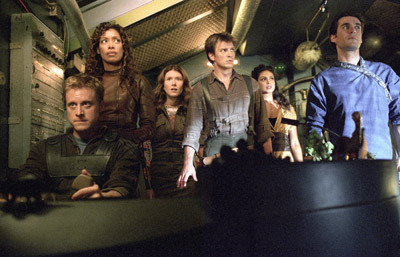 At the beginning of each episode, it was explained how Earth was used up, prompting humanity to seek out a new home. This is what eventually led them to 34 Tauri in the 22nd century where they began the process of terraforming and settling its the many worlds and moons. Though it was never explained in detail, mainly because the show was cancelled before they could (screw you Fox!), indications are given in the movie Serenity and the expanded universe that this involved Generation Ships.
At the beginning of each episode, it was explained how Earth was used up, prompting humanity to seek out a new home. This is what eventually led them to 34 Tauri in the 22nd century where they began the process of terraforming and settling its the many worlds and moons. Though it was never explained in detail, mainly because the show was cancelled before they could (screw you Fox!), indications are given in the movie Serenity and the expanded universe that this involved Generation Ships.
In the movie, this was done mainly through visuals, where a large of flotilla dusts off from Earth and eventually finds its way to the system of the White Sun. It was also said that the process of terraforming took decades, which would require that the crews had somewhere to stay while the terraformers did their work. Also, speculative point here, but it would stand to reason that the fleet would have to have some pretty large ships to accommodate both settlers and the kind of equipment they would need.
Chasm City: This novel, set in Alastair Reynold’s Revelation Space universe, involves a large thread that follows the settlement of the world known as Sky’s Edge. This took place early in the universe’s backstory, before the development of lighthuggers and therefore required that the ships used be able to support crews for long periods of time.
This novel, set in Alastair Reynold’s Revelation Space universe, involves a large thread that follows the settlement of the world known as Sky’s Edge. This took place early in the universe’s backstory, before the development of lighthuggers and therefore required that the ships used be able to support crews for long periods of time.
From Reynold’s descriptions, these ships were large, cylindrical vessels that boasted vast bays to hold their many cryogenically-frozen passengers. At the same time, the waking crew needed vast facilities to provide for their needs. These included mess halls, sleeping quarters, medical bays, and recreational facilities. Sky Haussmann, one of the children amongst the crew, had a nursery with a robotic clown and virtual backgrounds.
This divide, between a waking crew and frozen settlers, represents a sort of compromise between the cryoship design and the generation ship. On the one hand, you’ve got the majority of your crew at near-frozen temperatures and perfectly preserved for the voyage. On the other, you’ve got a crew walking about and looking for food, rest and entertainment. However, it still qualifies, and even inspired my group in our quest to design the perfect story for colonization!
Orphans of the Sky: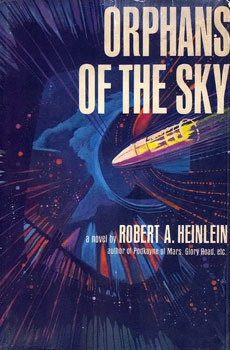 One of the earliest known examples of the use of generation ships in sci-fi, this two-novella set was also one of Heinlein’s first works. Like Clarke’s Rendezvous with Rama, it features a massive cylindrical ship that is drifting through space. But unlike Rama, Heinlein’s ship, known as the Vanguard, has become a derelict that is permanently adrift in space.
One of the earliest known examples of the use of generation ships in sci-fi, this two-novella set was also one of Heinlein’s first works. Like Clarke’s Rendezvous with Rama, it features a massive cylindrical ship that is drifting through space. But unlike Rama, Heinlein’s ship, known as the Vanguard, has become a derelict that is permanently adrift in space.
As the story goes on, we learn that this was due to a mutiny which killed all the piloting officers many generations back. Since that time, the descendants of the surviving loyal crew have forgotten the purpose and nature of their ship and lapsed into a pre-technological culture marked by superstition. In fact, they now view their ship as the cosmos itself, and interpret its “voyage” as a metaphor.
The crew are also ruled by an oligarchy of “Officers” and “Scientists”, at the head of which is the descendent of the original captain. Much like pre-industrial times, most crew members are dedicated to a simple life where they tend to agriculture and are illiterate. Seldom does anyone ever venture to the “upper decks” where the “muties” (aka. “mutants” or “mutineers”) are kept. These individuals, it is learned, know the truth of the ship’s purpose, another reason why they are ostracized from the rest of the crew.
As you can plainly see, this book not only featured a generation ship and some rather hard science when it came to colonization, it also raised some valid and interesting questions about how space travel and confining environments could effect subsequent generations of people. Those who were born into an enclosed environment would come to know it as their whole world. And in the absence of external, verifiable facts (such as messages from Earth or historical records), they could even be led to believe there was nothing beyond their walls.
Paradises Lost: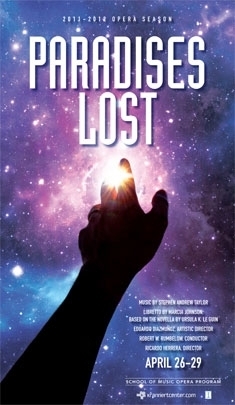 Similar in tone and setting to Heinlein’s Orphans, this story by Ursula K. LeGuin focuses instead on the psychological impact that generational travel would have on a human crew. Adapted into a musical, this story explores the basic question of what happens when you spend your whole life (and entire generations) traveling toward a goal, only to find that the endpoint has become otherworldly and unattainable?
Similar in tone and setting to Heinlein’s Orphans, this story by Ursula K. LeGuin focuses instead on the psychological impact that generational travel would have on a human crew. Adapted into a musical, this story explores the basic question of what happens when you spend your whole life (and entire generations) traveling toward a goal, only to find that the endpoint has become otherworldly and unattainable?
The story takes place aboard a generation ship known as the Discovery, where people are born and die on a trip to colonize a distant planet. Much like the Orphans, the ship becomes their entire universe and begins to seem more tangible to them than Earth or their mission to colonize a new world. The reason for this quite simple; as the journey goes on, those who knew a life on Earth are slowly dying off, and subsequent generations know about these things only through tales and lore.
As a result, a new religion is borne which teaches that the ship is “spaceship heaven” and that it is bound for eternity. This religion is known as Bliss, and the younger generation are embracing it against the wishes of the older. The story is told through the eyes of two elder characters – Hsing and Luis. They know their lives will end on board the ship and that their mission lies in the hands of future generations. Naturally, they worry since said generations are convinced that they should never leave the ship they call heaven.
Rendevouz with Rama: One of the best examples of a generational ship, which extra-terrestrial in origin! Known as Rama, this massive space cylinder was basically a self-contained world that was carrying the Raman civilization from one corner of the galaxy to another. When a crew from Earth arrive and begin to survey the interior, they begin to notice several tell-tale features.
One of the best examples of a generational ship, which extra-terrestrial in origin! Known as Rama, this massive space cylinder was basically a self-contained world that was carrying the Raman civilization from one corner of the galaxy to another. When a crew from Earth arrive and begin to survey the interior, they begin to notice several tell-tale features.
For one, the interior contains several structures which appear to be arranged in “cities” – odd blocky shapes that look like buildings, and streets with shallow trenches in them, looking like trolley car tracks. In addition, there is a sea that stretches in a band around Rama dubbed the Cylindrical Sea, and trenches cut into the sides that appear to be windows.
In time, all the machinery comes to light, thanks in part to the admission of light through the ship’s long windows. Small creatures that appear to be biological machines (aka. “biots”) begin to come out as well and conducting routine maintenance. In time, they come to the conclusion that the buildings constitute factories, that the cylindrical sea contains trace elements and bio-matter which they will begin to convert into “Ramans” as soon they get in range of their destination.
In the end, it seemed that the Ramans determined that the best way to spread their species was to break them down into their component parts, place them aboard ships that would float for generations through space, and begin recompiling them once they got to where they wanted to go. Ultimately, Sol was just a stopover on their long journey, and more ships were coming in subsequent novels. Still, this first exposure to the alien generation ship was an educational experience!
Ringworld: Written by Larry Niven, the Ringworld series is considered one of the greatest examples of exploratory sci-fi. Set in the Known Space universe of the distant future, the story revolves around the discovery and exploration of the Ringworlds, an artificial habitation ring built by an extinct civilization. With the makers of these rings long dead, the rings themselves are adrift and their engineered inhabitants degenerated into a primitive state.
Written by Larry Niven, the Ringworld series is considered one of the greatest examples of exploratory sci-fi. Set in the Known Space universe of the distant future, the story revolves around the discovery and exploration of the Ringworlds, an artificial habitation ring built by an extinct civilization. With the makers of these rings long dead, the rings themselves are adrift and their engineered inhabitants degenerated into a primitive state.
These artificial rings are roughly one million kilometers wide and one thousand kilometers across, approximately the diameter of Earth’s orbit. Each one encircles a Sol-type star which provides both life sustaining energy and light. And of course, they rotate, thus providing artificial gravity that is 99.2% as strong as Earth’s through the action of centrifugal force. And night is provided by an inner ring of shadow squares which are connected to each other by thin ultra strong shadow square wire.
The ringworld has a habitable flat inner surface that is equivalent in area to approximately three million Earth-sized planets. Hence, it is able to sustain extensive ecosystems and all forms of life. This appears to be purpose of the rings in the end, the creation of habitable areas in space that were removed from terrestrial environments. And added bonus was the ability to transport said life over vast distances through space without having to stick them in an enclosed environment.
So really, these things were like a gigantic version of a generation ship, capable of moving an entire species or civilization through space.
Stargate Atlantis:
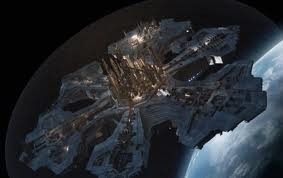 The series Stargate Atlantis contained a few mentions of vessels which fit the profile of generation ships. For starters, there was the Ancients City Ship, a self-contained city that was also a spaceship. Though it was capable of FTL travel, the vessel was capable of sustaining a city-sized population for extended periods of time as it traveled through space.
The series Stargate Atlantis contained a few mentions of vessels which fit the profile of generation ships. For starters, there was the Ancients City Ship, a self-contained city that was also a spaceship. Though it was capable of FTL travel, the vessel was capable of sustaining a city-sized population for extended periods of time as it traveled through space.
In addition, in the third season episode entitle “The Ark”, Colonel Sheppard’s team discovers a facility inside a hollowed-out moon that turns out to be an ark created by the people of the planet around which the moon is in orbit. The ark was built to preserve the existence of the people from the planet so that they could reemerge and rebuild their civilization. Generations prior, these people had fought a disastrous war with the Wraith in which they were almost exterminated.
Though not a vessel per se, the moon base served the same purpose as a generation ship. Though the moon orbited their original homeworld and the people really weren’t traveling through space (except in orbit around their planet), the principle was essentially the same. People were kept in stasis until the day came when they could awaken to transplant themselves on the intended world, thus ensuring the survival and expansion of their civilization.
Yes, the examples abound! In fact, the concept of the generation ship and related ideas are so fertile that I’m kind of surprised that it took me so long to really appreciate it. But then again, I came to a lot of the classics a little late in life. Ah well, it doesn’t really matter when you get to the destination, provided that you get there and enjoy the journey. Which is kind of the concept behind a generation ship isn’t it? If you can’t just warp your way across the universe – if you got to take your time and drift slow – you might as well travel in style!












